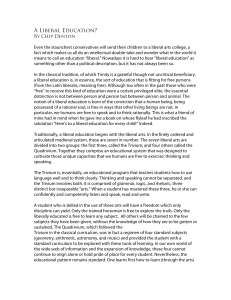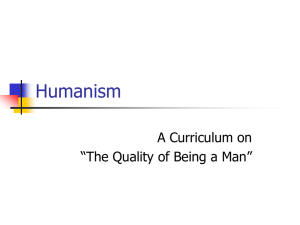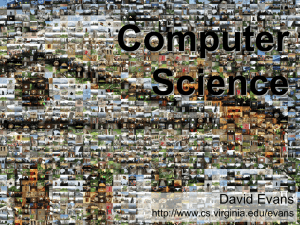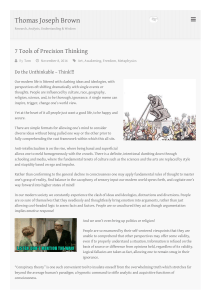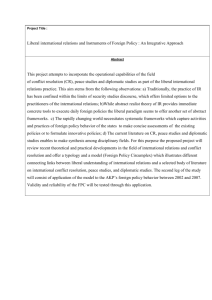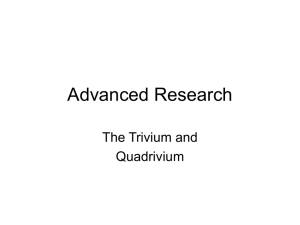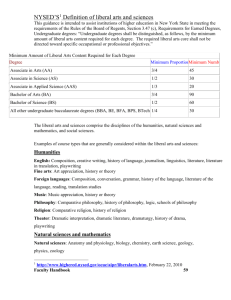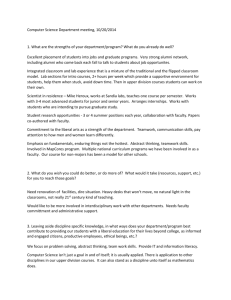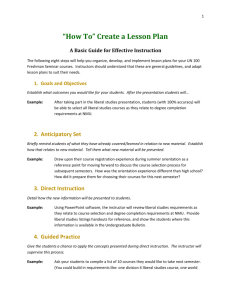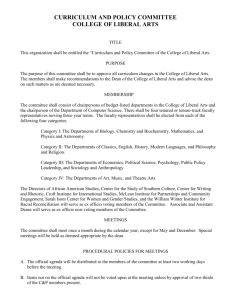A Mathematical Look at the 7 Liberal Arts as ''Humanities''
advertisement
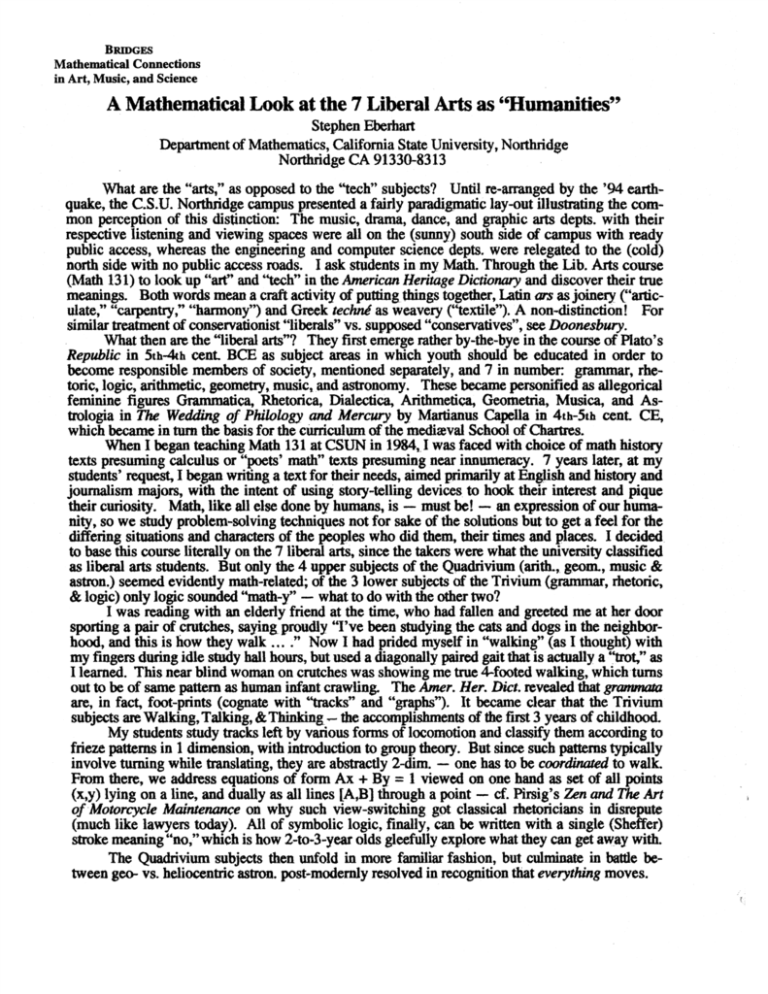
BRIDGES Mathematical Connections in Art, Music, and Science A Mathematical Look at the 7 Liberal Arts as ''Humanities'' Stephen Eberhart Department of Mathematics, California State University, Northridge . Northridge CA 91330-8313 What are the "arts," as opposed to the "tech" subjects? Until re-arranged by the '94 earthquake, the C.S.U. Northridge campus presented a fairly paradigmatic lay-out illustrating the common perception· of this distinction: The music, drama, dance, and graphic arts depts. with their respective listening and viewing spaces were aU on the (sunny) south side of campus with ready public access, whereas the engineering and computer science depts. were relegated to the (cold) north side with no public access roads. I ask students in my Math. Through the Ub. Arts course (Math 131) to look up "art" and "tech" in the American Heritage Dictionary and discover their true meanings. Both words mean a craft activity of puUingthings together, Latin QI'S as joinery ("articulate," "carpentry," "harmony") and Greek techni as weavery \'textile"). A non-distinction! For similar treatment of conservationist "libemls" vs. supposed "conservatives", see Doonesbury. What then are the "liberal arts"? They first emerge rather by-the-bye in the course of Plato's Republic in 5th-4th cent. BCE as subject areas in which youth should be educated in order to become responsible members of society, mentioned separately, and 7 in number: grammar, rhetoric, logic, arithmetic, geometry, music. and astronomy. These became personified as allegorical feminine figures Grammatica, Rhetorica, Dialectica, Arithmetica, Geometria, Musica, and Astrologia in The Wedding of Philology and Mercury by Martianus Capella in 4th-5th cent. CE, which became in turn the basis for the cumcuhun of the mediawal School of Charttes. When I began teaching Math 131 at CSUN in 1984,-1 was faced with choice of math history texts presuming calculus or "poets' math" texts presuming near innumeracy. 7 years later, at my students' request, 1 began writing a text for their needs, aimed primarily at English and history and journalism majors, with the intent of using story-telling devices to hook their interest and pique their curiosity. Math, like all else done by humans, is - must be! - an expression of our humanity, so we study problem..solving techniques not for sake of the solutions but to get a feel for the differing situations and characters of the peoples who did them, their times and places. I decided. to base this course literally on the 7 liberal arts, since the takers were what the university classified as liberal arts students. But only the 4 upper subjects of the Quadrivium (arith.,. g~m., music &. astron.) seemed evidendy math-related; of the 3 lower subjects of the Trivium (grammar, rhetoric, &. logic) only logic sounded "math-y" - what to do with the other two'! I was reading with an elderly friend at the time, who had fallen and greeted me at her door sporting a pair of crutches, saying proudly "I've been studying the cats and dogs in the neighborhood, and this is how they walk ... ;" Now I had prided myself in "walking" (as I thought) with my fingers during idle study hall hours, but used a diagonally paired gait that is actually a "trot," as I learned. This near blind woman on crutches was showing me true 4-footed walking, which·turns out to be of same pattern as human infant crawling. The Amer. Her. Diet. revealed that granI1IIQIll are, in fact, foot-prints (cognate with "tracks" and "graphs"). It became clear that the Trivium subjects are Walking, Talking, &. Thinking .- the accomplishments of the first 3 years of childhood. My students study tracks left by various forms of locomotion and classify them according to frieze patterns in 1 dimension, with introduction to group theory. But since such patterns typically involve turning while translating, they are abstracdy 2-dim. - one has to be coordinated to walk. From there, we address equations of form Ax + By 1 viewed on one hand as set of all points (x,y) lying on a line, and dually as all lines [A,B] through a point - d. Pirsig's Zen and The Art of ·Motorcycle Mainte1llJ1lCe on why such view-switching got classical rhetoricians in disrepute (much like lawyers today). AU of symbolic logic, finally, am be written with a single (Sheffer) stroke meaning "no," which is how 2-to-3-year olds gleefully explore what they can get away with. The Quadrivium subjects then unfold in more familiar fashion, but culminate in batde between geo- vs. heliocentric astron. post-modernly resolved in recognition that everything moves. =
